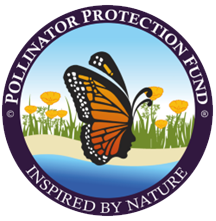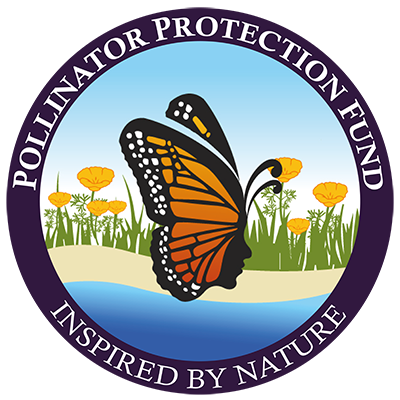A Laguna Beach couple put in new plants to help support monarch butterflies, other butterfly species and native bees.

With the iconic monarch butterfly having joined an international “endangered” list last year, a Southern California couple has planted a native-plant butterfly garden at the Estancia La Jolla Hotel & Spa, hoping to increase the resort’s winged guests.
Laura Ford and her husband, Michael, planted the garden to help support monarch butterflies, other butterfly species and native bees. The Laguna Beach residents founded the nonprofit Pollinator Protection Fund to educate others about the need for more butterflies and other pollinators and to establish gardens that promote their growth.
In July 2022, the International Union for the Conservation of Nature added the monarch to its “red list” of threatened species for the first time and categorized it as “endangered” — two steps from extinction.
The Fords, who stayed at Estancia on their honeymoon in 2013, got the idea for the butterfly garden when they revisited the property recently to celebrate their anniversary.
“Every two feet we were like, ‘Oh, you can make a garden there,’” Laura Ford said.
She reached out to Estancia General Manager Eric Jenkins to sow the idea. Jenkins responded enthusiastically, Ford said.
It took the Fords about two weeks to build the garden, which was funded by the hotel.
The garden is close to the entrance and open to the public. It contains native grasses and plants including beach evening primrose, seaside daisies, hummingbird sage, sea dahlia, California coast sunflowers, Pacific Coast iris, California hedge nettle, salvia bee’s bliss, island pitcher sage and more.
The Fords also built “pop-up butterfly hotels” — bespoke wooden crates varnished and filled with organic soil, milkweed (the monarch caterpillar’s food source) and flowers.
The butterfly hotels are installed across the property to encourage monarch flyovers, Ford said.
“Laura’s gardens have supported the growth of 12-plus monarch caterpillars,” Jenkins said. “The butterfly garden also features an added space for our guests to wander, explore and learn about the unique monarch habitat.”
Education about the butterflies is particularly important to the project, Ford said.
After reading that monarch butterfly numbers were rapidly declining in 2021, the Fords thought that “with a small amount of grassroots action you can actually have a big effect,” Laura said.
They “carried on studying and reading about native bees, about butterflies, about the fact that California is an ecological hot spot,” she said.
The Fords, who “love the outdoors and … share a love of nature,” began their nonprofit with several public spaces in Newport Beach and Laguna Beach, Laura said.
“A key part of our gardens is bright and uplifting educational signage about the monarch butterfly life cycle, habitat and what people can do in their own yards, on balconies and in planters to help this imperiled species,” she said.
The nonprofit also has designed and built custom pollinator gardens for private homes.
Ford said she and Michael are looking to move to La Jolla and are eager to continue their work in San Diego. Laura hopes others will read the Estancia signs and be inspired to plant similar gardens at their own homes.
“We do have to help pollinators because they really make the world go round,” Ford said.
No space is too small for a butterfly garden, she said. “You could have one milkweed plant in a pot and you can get monarch caterpillars on it. It’s kind of amazing.”
For more information about the Pollinator Protection Fund, visit protectmonarchs.com.
How pollination works and why it matters
According to the U.S. Department of Agriculture:
Pollinators such as bees, butterflies, moths, birds, bats, beetles and other insects visit flowers and plants in their search for food (nectar and pollen). During a visit, a pollinator may brush against the flower’s reproductive parts, unknowingly depositing pollen from flower to flower. The plant uses the pollen to produce a fruit or seed. Many plants cannot reproduce without pollen carried to them by foraging pollinators.
Three-fourths of the world’s flowering plants and about 35 percent of the world’s food crops depend on animal pollinators to reproduce. Some scientists estimate that one out of every three bites of food we eat exists because of animal pollinators.

